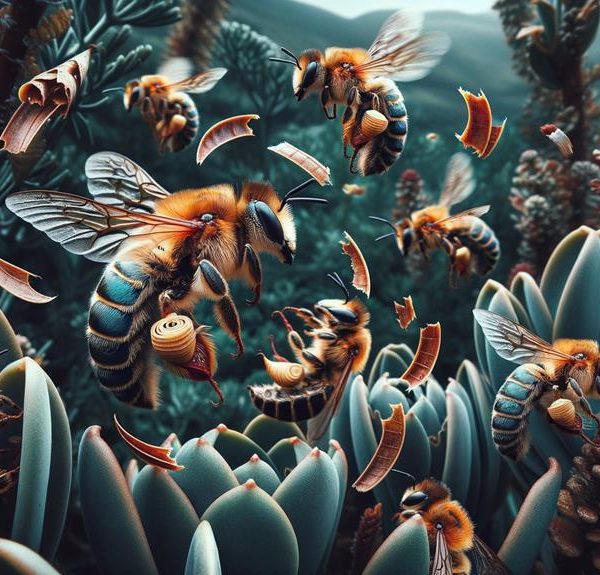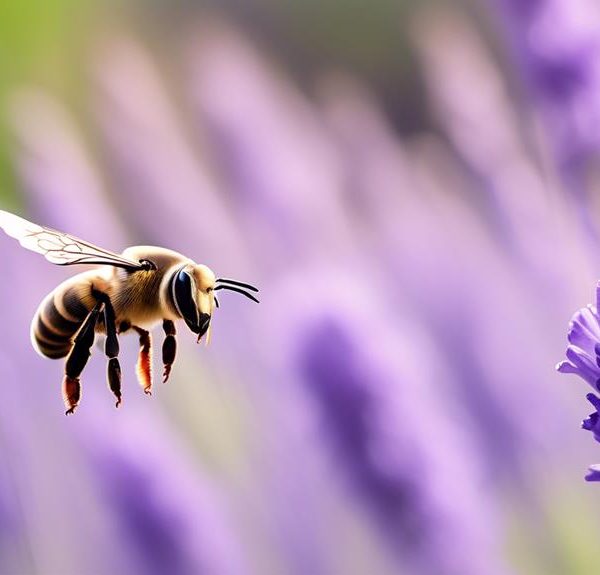Kicking off winter, do leaf cutter bees hibernate or employ a different survival strategy? Dive into this intriguing mystery.
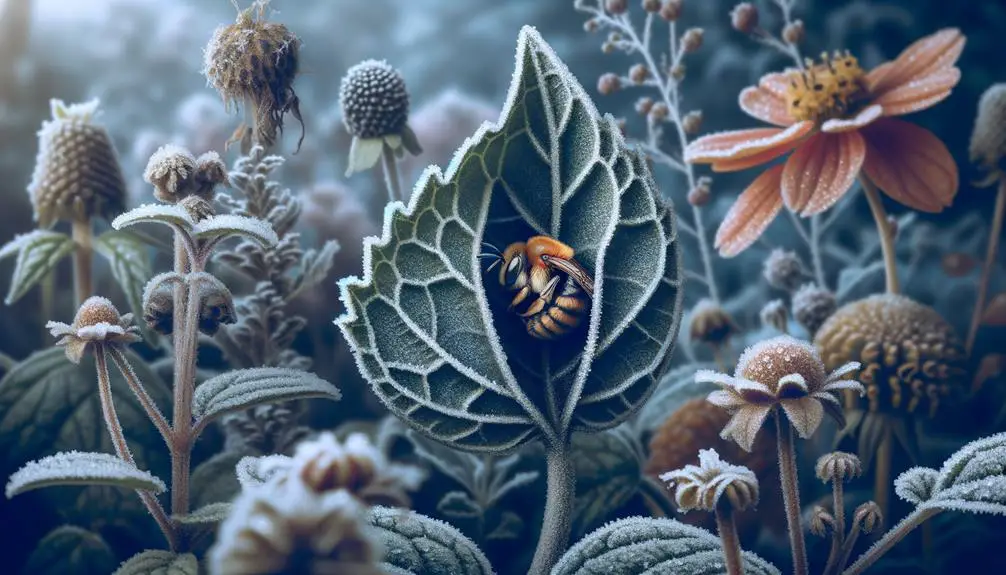
Do Leaf Cutter Bees Hibernate
Just by coincidence, you've probably noticed leaf cutter bees buzzing around your garden during the warmer months. They're hardworking creatures known for their leaf-snipping antics and solitary lifestyle.
But have you ever wondered what happens to them when winter rolls around? Do they, like bears and some small mammals, go into a deep sleep otherwise known as hibernation? Or do they have another survival strategy up their tiny, buzzing sleeves?
It's a curious question, isn't it?
Let's explore this fascinating topic together.
Key Takeaways
- Leaf cutter bees do not hibernate, they enter diapause, a form of induced dormancy.
- Diapause allows leaf cutter bees to conserve energy and survive harsh winter conditions.
- During diapause, leaf cutter bees lower their metabolic rate and pause reproduction.
- Leaf cutter bees rely on stored fat reserves to sustain them during the food-scarce winter months.
Understanding Leaf Cutter Bees
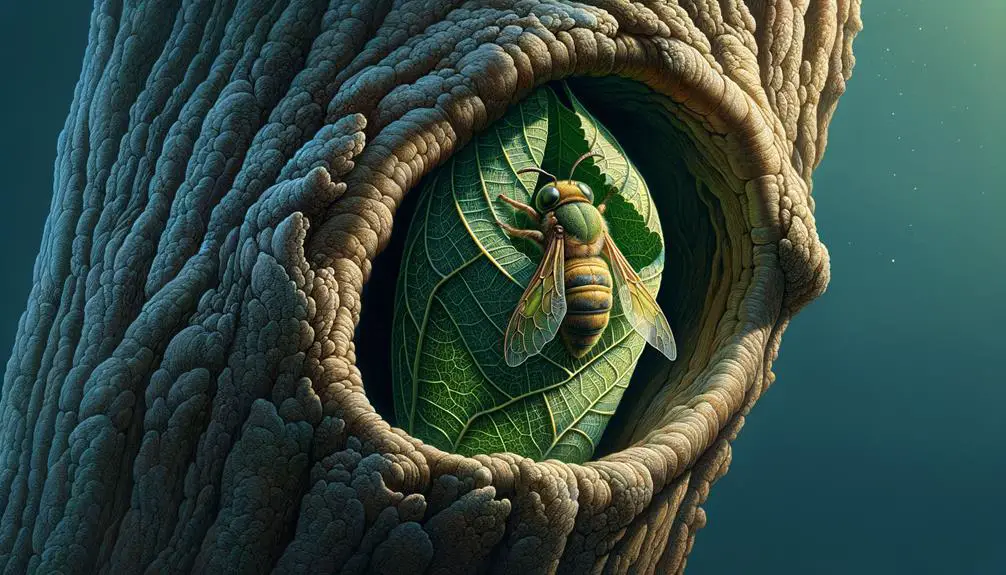
While you might often overlook these industrious insects, understanding leaf cutter bees is crucial due to their key role in pollination and maintenance of biodiverse ecosystems. They're not your typical honey bees or bumblebees, but rather, a solitary species with unique behaviors. Unlike communal bees, leaf cutter bees make individual nests, often in existing cavities like plant stems or holes in wood.
You'd be amazed by their precision in cutting leaves, which they use to construct their nests. They're skillful architects, creating a series of cells within their nest, each containing a single egg and a food supply for the larvae. This meticulous behavior ensures the survival of the next generation.
But what's truly remarkable is their efficiency in pollination. As they gather pollen, they carry it on their hairy abdomen, spreading it effectively between plants. In fact, they're so good at it that they're used in commercial agriculture for crop pollination.
Leaf Cutter Bees' Lifecycle

Diving into the lifecycle of leaf cutter bees, you'll find it's a fascinating journey that begins when a female bee lays her eggs in the carefully crafted leaf cells. Each cell is structured with immaculate precision, lined with leaf fragments. The female bee then deposits pollen and nectar inside, providing sustenance for the soon-to-hatch larvae.
After the larvae emerge, they'll feed on the stored pollen and nectar. As they mature, they'll spin a cocoon within the leaf cell where they'll metamorphose into adult bees. This transformation process, known as pupation, lasts for approximately two weeks.
Once emerged, the adult leaf cutter bees will set about their tasks. Females will cut leaves and create new nests, while males' primary role is to mate with females. It's interesting to note that males typically live for a shorter duration than females.
As winter approaches, the bees will enter a state of diapause, a form of hibernation. They'll remain in their cocoons until the warmth of spring triggers their emergence, thus restarting the life cycle.
This intricate, cyclical process demonstrates the resilience and adaptability of leaf cutter bees in their ever-changing environment.
Winter Adaptations in Insects

Just like leaf cutter bees, many insects have developed unique adaptations to survive the harsh winter months. They've evolved strategies to combat the cold, some of which you'll find intriguing.
Insects like the monarch butterfly migrate to warmer climates, a tactic you might be familiar with from bird behavior. They'll travel thousands of miles to escape the cold, a remarkable feat for such small creatures.
Other insects, including certain beetles and moths, make use of a process called diapause. It's a sort of insect hibernation, where metabolic activity slows down, conserving energy and allowing the insect to survive freezing temperatures.
There are insects that produce antifreeze proteins in their bodies. These proteins lower the freezing point of their bodily fluids, helping them withstand colder environments. It's as if they're carrying their own personal heater.
You'll also find insects that burrow deep into the soil, leaf litter, or under tree barks for insulation against the cold. This technique, known as overwintering, is used by many insects, including leaf cutter bees.
These adaptations are fantastic examples of nature's ingenuity, helping insects to thrive in diverse climates and seasons.
Hibernation Vs. Diapause in Bees
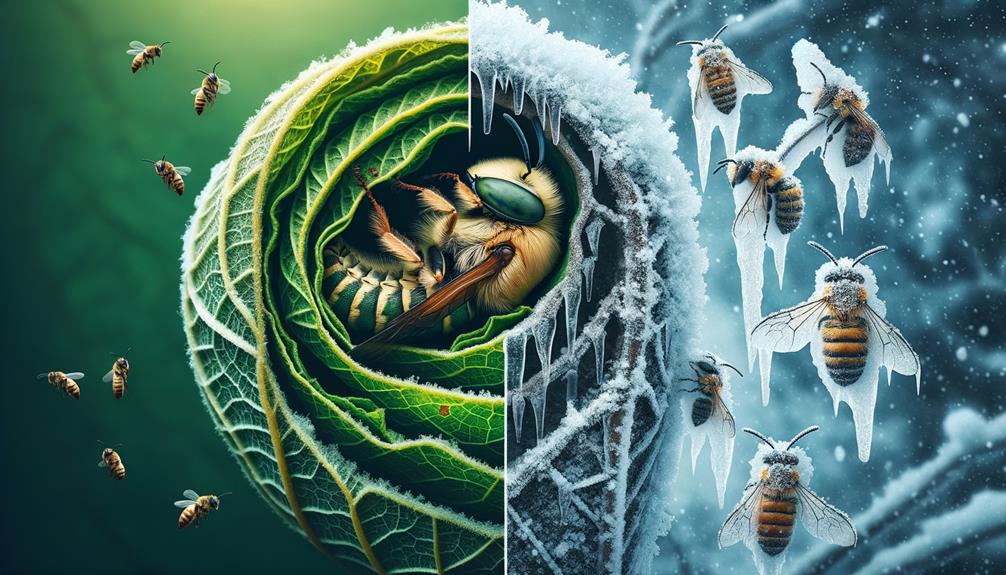
Understanding the difference between hibernation and diapause in bees, particularly in leaf cutter bees, requires a deep dive into their unique winter survival strategies.
Hibernation, you see, is a state of inactivity with reduced metabolism, typically associated with cold-blooded animals. It's a term you'd normally apply to creatures like bears, but it's not quite accurate when talking about bees.
Bees, including leaf cutter species, enter a state called diapause. This is an induced dormancy that insects undergo in response to adverse environmental conditions. In this state, bees cease growth and development, their metabolic rate drops, and reproduction is paused. It's a survival technique that allows them to withstand the harsh winter months.
While hibernation is often reversible if conditions improve, diapause is typically a fixed period determined by the insect's internal biological clock. The primary purpose of this phase isn't just to survive but to do so without aging or consuming too much energy.
Leaf Cutter Bees' Winter Survival

When it comes to surviving the winter, leaf cutter bees have evolved a highly specialized strategy that hinges on their ability to enter diapause, a state of metabolic dormancy, ensuring not just their survival but also their conservation of energy. This biological adaptation is a remarkable phenomenon that allows them to withstand harsh environmental conditions, particularly the cold winters.
You might be wondering how this works. Well, it's quite ingenious. The bees' metabolic rate significantly drops during diapause, meaning they consume less energy. This, combined with stored fat reserves, allows them to sustain themselves during the winter months when food sources are scarce.
It's not just about survival, though. This hibernation-like state also has reproductive implications. Female leaf cutter bees lay their eggs in the fall and these developing larvae enter diapause. Come spring, they emerge as full-fledged adult bees ready to pollinate.
This life cycle adjustment is key to the bees' survival strategy. It's a delicate balance, a synchronization of biological rhythms and environmental cues. Nature's way of ensuring that these vital pollinators continue their crucial work, season after season.
Conclusion
In conclusion, you've now discovered that leaf cutter bees, like many insects, don't truly hibernate. They enter diapause, a dormant state enabling survival through cold winter months. This adaptation in their lifecycle is crucial for their persistence.
You've also learnt how winter adaptations vary among insects. By understanding these intricate details, you're better equipped to appreciate the resilience and adaptability of these fascinating creatures.

